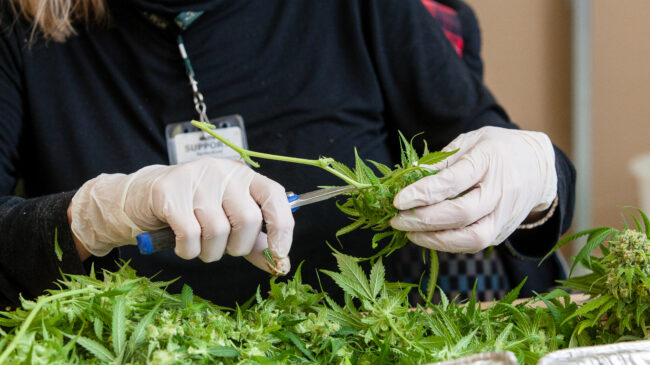Reason Foundation recently published an analysis of California’s legal cannabis market and how prices and availability impact consumers/ decisions about whether to purchase legal or illegal marijuana.
California launched its legal cannabis market in Jan. 2018, but the illegal market continues to dominate the legal one. Cannabis is subject to an array of taxes assessed at the state and local levels and these taxes create a price disparity between legal and illegal marijuana products that are otherwise similar in nature. Moreover, illegal and unregulated supply chains are firmly established across California whereas legal supply chains for cannabis are newly emerging and largely fragmented across the state, with two-thirds of municipalities banning legal sales in their jurisdictions even though the state’s voters legalized cannabis.
The Reason Foundation analysis shows a majority of licensed retailers are concentrated in just 18 local jurisdictions while there are no legal cannabis retailers within any reasonable distance of residents’ homes across vast swaths of the state. The report quantifies the effects of taxation on the legal cannabis market, showing that the total tax per pound of cannabis in California ranges from $677 to $1,441, depending on the local jurisdiction. These tax costs are greater than the wholesale production cost of cannabis which is estimated at $564 per pound. The costs of these taxes are passed on to California consumers, with the prevailing price of legal cannabis at retail averaging $6.84 per gram, or $3,103 per pound.
The cumulative total tax cost in California, which includes local levies, a state wholesale cultivation tax, a state retail excise tax, and ordinary sales tax is far greater than in comparable states with mature marijuana markets, such as Oregon and Colorado. Both Oregon and Colorado exempt cannabis sales from ordinary sales taxes and assess simplified excise taxes.
Data shows that legal cannabis sales in these states, on a per capita basis, are far greater than in California and that this difference cannot be fully explained by a difference in usage rates. The Reason Foundation analysis concludes that illegal sales still comprise a large share of California’s cannabis market based on these data and that a reduction in taxes could spur faster growth of the legal market at the expense of the illegal market.
Now, new evidence supporting these observations has emerged in a study published in the Journal of Studies on Alcohol and Drugs. The study draws on direct survey data of consumers in the United States and Canada through the International Cannabis Policy Study. The survey contacted nearly 50,000 respondents in 2019 and 2020 to poll their usage and buying patterns of cannabis products. Approximately 17,000 respondents lived in a location with mature, legal cannabis markets and reported purchasing legal cannabis within the prior year. Among these, nearly 12,000 people gave some indication they had purchased cannabis from an illegal source while the remainder indicated they had only purchased from legal sources.
Among consumers who indicated they had purchased illegal cannabis, the top reason given for preferring illegal products was the price. More than one-third of respondents indicated a belief that legal retailers charged higher prices. The study’s authors compared respondents’ beliefs on price to the average reported prices of legal cannabis products within their regions and found this belief was more prevalent in regions that had higher retail prices. In other words, consumers’ belief about the price if cannabis was largely accurate. Since cannabis taxes raise retail prices, they likely play a substantial role in pushing consumers toward illegal sellers.
The second and third most prevalent reasons given for purchasing illegal marijuana—consumers believe legal sources are less convenient or are too far away from respondents’ place of residence—are also relevant to California’s legal products having difficulties competing with illicit markets
Additional reasons for purchasing illegal cannabis were far less prevalent but included factors such as loyalty to an established dealer, the desire to remain anonymous, and supply shortages at legal retailers.
The survey results illustrate that many consumers will continue to purchase illegal cannabis, even in markets with legal cannabis, when the retail price of legal cannabis is significantly higher than illegal alternatives or legal retailers are unavailable or inconveniently located.
Consumers say they are far more likely to opt for legal cannabis if the prices are comparable to those of illegal alternatives. Thus, the survey shows states that are trying to make their legal marijuana markets more competitive with illicit products the path forward: reduce cannabis taxes so legal products can be more price competitive with illicit products.

